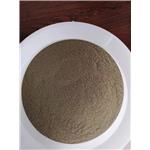Uses
Arc-produced, multi-walled carbon nanotubes contain 55-65 wt% nanotubes and 35-45wt% graphite nanoparticles. The tubes have a diameter distribution of 2-50 nm, and a typical length of >2 microns (straight tubes). The chemical composition is 100% carbon, with no metal impurities. Because the nanotubes are grown at very high temperatures (3000-4000°C), the product contain far less defects than nanotubes produced by other methods. The nanotubes are stable in air up to 700°C.
Description
Arrays grown on 10x10x1mm quartz substrate using a single source CVD process that yields vertically aligned MWNTs (< 1% catalyst impurity). Arrays are 30µm tall (± 3µm) and are composed of MWNTs 100nm in diameter (± 10nm). Arrays up to 150µm in height can be provided on request.
Uses
Applications of Carbon Nanotube include:• ;Electronics1• ;Sensors2• ;Composites• ;Energy Storage• ;Study of Life Science systems3
Uses
These carbon nanotubes are produced via the Arc Discharge process and are purified via density gradient centrifugation.
Research applications include:
- Electronics?
- Sensors?
- Composites
- Energy Storage
- Study of Life Science systems?
Uses
Carbon nanotubes enhance the electrical conductivity and the mechanical properties. It is also used in chemical research. It is suitable as a hydrogen storage material. It is an ideal super capacitor electrode materials, It is used in the preparation of super composites. carbon nanotubes have excellent field emission performance and used in heavy weight cathode tube technology. It is also applied to naanometer electronic, catalytic fiber machine. Nanotubes will have an important role in nanotechnology engineering. carbon nanotube also can be used in making molecule bearings and nano robot.
General Description
This product has been enhanced for energy efficiency.





